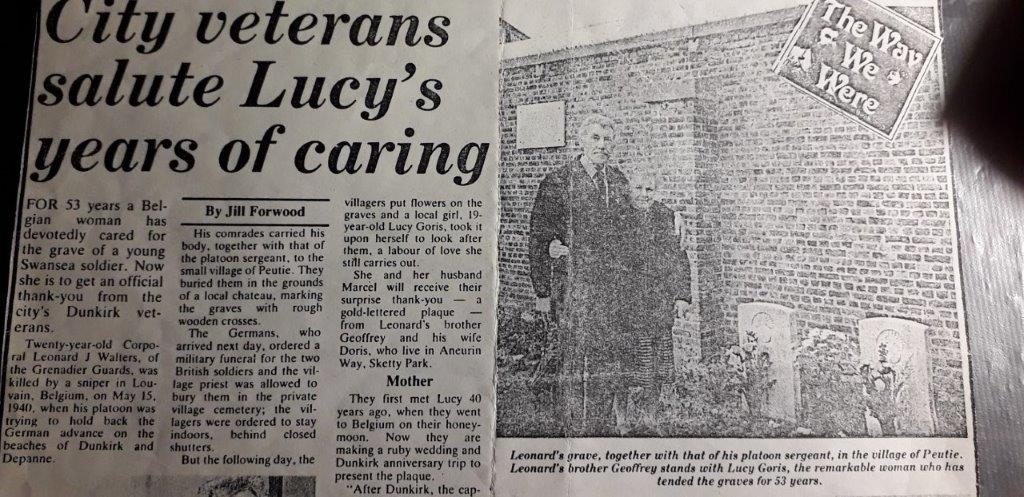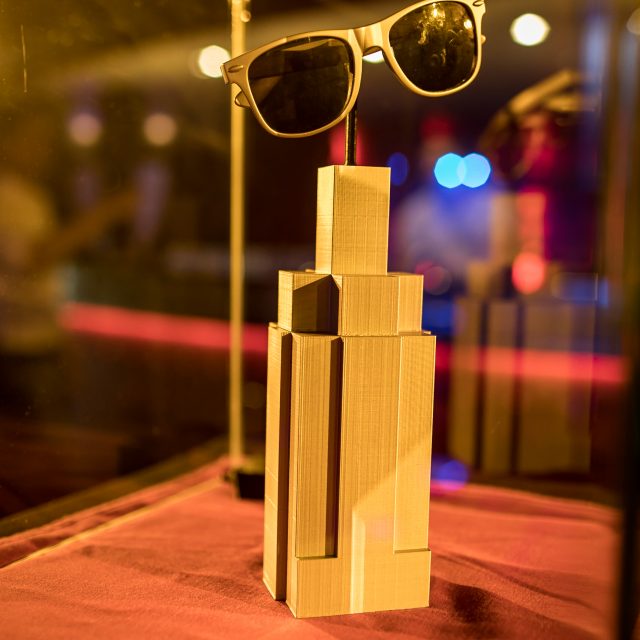Two Britons, killed during the WW2 Blitzkrieg, rest in the pretty Flemish cemetery of Peutie, among countless Belgian ex-combatants.
Former UK journalist Dennis Abbott recently put crosses on the graves on behalf of the Royal British Legion during the Armistice commemoration week in November.
But he is also looking for answers.
What were those two young British boys actually doing in Peutie? And above all: who are Lucy and Hannah, the two Belgian women who maintained their graves for years?
Abbott has been living in Belgium for 20 years. He is a former journalist for, among others, The Sun and The Daily Mirror in London and was subsequently a spokesman for the European Commission. He is also a member of the Royal British Legion, a charity which raises money to support serving and former serving members of the Royal Navy, the British Army and the Royal Air Force facing hardship, as well as their families.
One of their tasks is also to keep alive the memory of those who died for our freedom. Indeed, Abbott was a reservist in Iraq for British troops in 2003.
“On the occasion of the annual commemoration of the Armistice, I looked into stories related to the Battle of Belgium in May 1940,” says Abbott. “I discovered the graves of two British soldiers of the Grenadier Guards in Peutie. They are Leonard ‘Len’ Walters and Alfred William Hoare. They both died on the night of 15 to 16 May. Len was barely 20 and Alfred 33. I was curious why their last resting place was in the village cemetery and not in one of the big war cemeteries in Brussels or Heverlee.
“I found an article in a British provincial newspaper explaining that the two soldiers were first buried in the grounds of a local castle – presumably Batenborch – and then taken to the village cemetery.”

Abbott said: “The case won’t let me go. I have looked into how the soldiers ended up in Peutie. Apparently, the 1st Battalion of the Grenadier Guards fought alongside the Belgian 6th Regiment Jagers te Voet. But nowhere is a specific mention of the German attack on Peutie to be found.
“The Belgian and British troops fought a rearguard action during a phased withdrawal beyond the Brussels-Willebroek Canal and then to the Channel coast.
“It seems that Peutie was the divisional headquarters of the Jagers te Voet Regiment. My guess is that the staff of the regiment and the British Guardsmen might have been housed at Batenborch Castle. So the castle was a target for the Germans.
Were Walters and Hoare guarding the place? Were they seconded to the Jagers te Voet to ensure the rearguard in the steady retreat towards Dunkirk? Or were they cut off from their regiment during the fighting?”
The date on the memorial stone, 15-16 May 1940, is also strange. Why two dates?
“My suspicion is that they died at night during enemy shelling or as a result of a night raid by the Luftwaffe. In the chaos of war, it cannot be ruled out either that they were victims of ‘friendly fire’.”
Abbott has also discovered that two women from Peutie, Lucy and Hannah, looked after Len and William’s graves for years.
“That intrigues me. What was their relationship with the fallen soldiers? Did they know them? I think Lucy died. The question is whether Hannah is still alive. Their relatives are probably still living in Peutie. Does anyone know more? On both graves someone has laid some beautiful chrysanthemums.”




